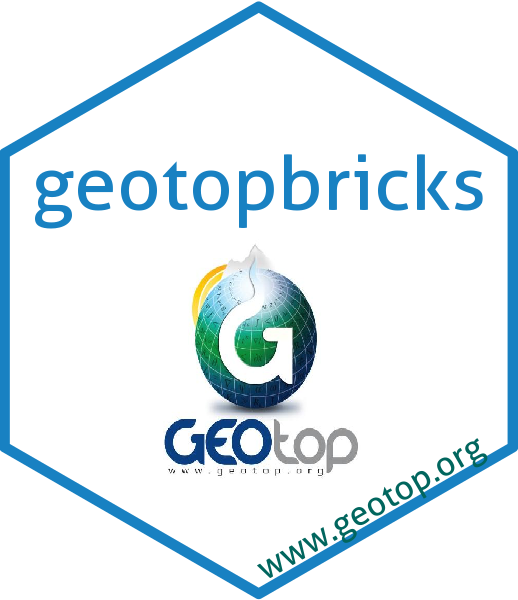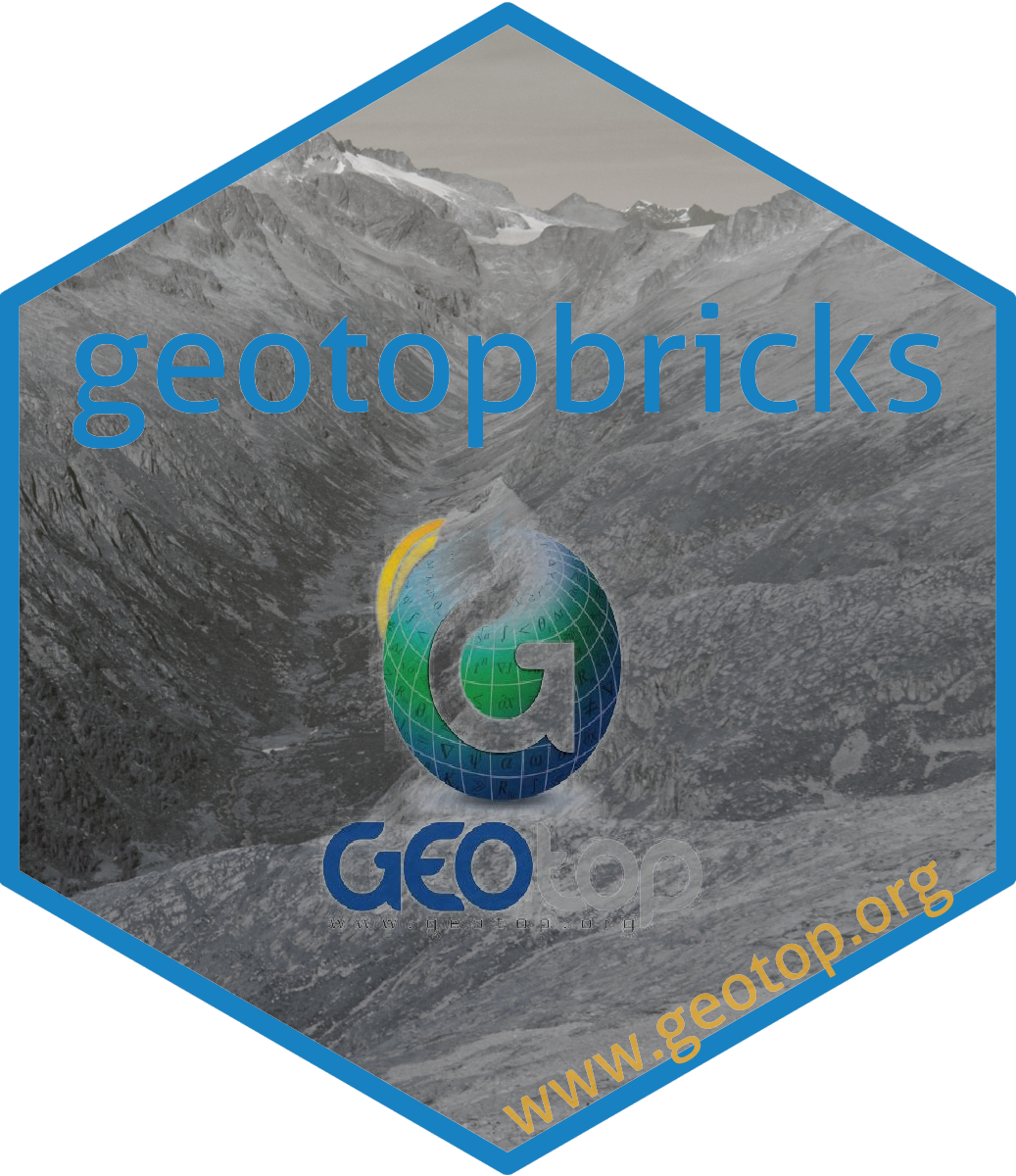Description
An R Plug-in for the Distributed Hydrological Model GEOtop.
Description
It analyzes raster maps and other information as input/output files from the Hydrological Distributed Model GEOtop. It contains functions and methods to import maps and other keywords from geotop.inpts file. Some examples with simulation cases of GEOtop 2.x/3.x are presented in the package. Any information about the GEOtop Distributed Hydrological Model can be found in the provided documentation.
README.md
geotopbricks
R plug-in Development of CRAN R package geotopbricks (http://cran.r-project.org/web/packages/geotopbricks)
To install this package on R fram R console:
>library(devtools)
>library(remotes)
>install_github("ecor/geotopbricks")


Getting Started
Try to run the following lines of code. More material also on https://github.com/ecor/geotopbricks_doc .
library(geotopbricks)
#Simulation working path
wpath <- 'https://raw.githubusercontent.com/ecor/geotopbricks_doc/master/simulations/panola13_run2xC_test3'
## wpath (RAW VERSION) of https://github.com/ecor/geotopbricks_doc/tree/master/simulations/panola13_run2xC_test3
prefix <- get.geotop.inpts.keyword.value("SoilLiqWaterPressTensorFile",wpath=wpath)
slope <- get.geotop.inpts.keyword.value("SlopeMapFile",raster=TRUE,wpath=wpath)
bedrock_depth <- get.geotop.inpts.keyword.value("BedrockDepthMapFile",raster=TRUE,wpath=wpath)
layers <- get.geotop.inpts.keyword.value("SoilLayerThicknesses",numeric=TRUE,wpath=wpath)
names(layers) <- paste("L",1:length(layers),sep="")
##### set van genuchten parameters to estimate water volume
theta_sat <- get.geotop.inpts.keyword.value("ThetaSat",numeric=TRUE,wpath=wpath)
theta_res <- get.geotop.inpts.keyword.value("ThetaRes",numeric=TRUE,wpath=wpath)
alphaVG <- get.geotop.inpts.keyword.value("AlphaVanGenuchten",
numeric=TRUE,wpath=wpath) # expressed in mm^-1
nVG <- get.geotop.inpts.keyword.value("NVanGenuchten",numeric=TRUE,wpath=wpath)
##### end set van genuchten parameters to estimate water volume
##### set meteo data
tz <- "Etc/GMT-1" ## See help(timezones) In particular:
## Most platforms support time zones of the form Etc/GMT+n and Etc/GMT-n (possibly also without prefix Etc/),
## which assume a fixed offset from UTC (hence no DST). Contrary to some expectations
## (but consistent with names such as PST8PDT), negative offsets are times ahead of (east of) UTC,
## positive offsets are times behind (west of) UTC.
start <- get.geotop.inpts.keyword.value("InitDateDDMMYYYYhhmm",date=TRUE,wpath=wpath,tz=tz)
end <- get.geotop.inpts.keyword.value("EndDateDDMMYYYYhhmm",date=TRUE,wpath=wpath,tz=tz)
nmeteo <- get.geotop.inpts.keyword.value("NumberOfMeteoStations",numeric=TRUE,wpath=wpath)
level <- 1:nmeteo
## set meteo data
meteo <- get.geotop.inpts.keyword.value("MeteoFile",wpath=wpath,data.frame=TRUE,
level=level,start_date=start,end_date=end,tz=tz)
##### end set meteo data
## IMPORTING AN OUTPUT SOIL MOISTURE PROFILE:
wpath <- 'https://raw.githubusercontent.com/ecor/geotopbricks_doc/master/simulations/Muntatschini_pnt_1_225_B2_004'
## wpath (RAW VERSION) of https://github.com/ecor/geotopbricks_doc/tree/master/simulations/Muntatschini_pnt_1_225_B2_004
## Not run:
SMC <- get.geotop.inpts.keyword.value("SoilLiqContentProfileFile",
wpath=wpath,data.frame=TRUE,date_field="Date12.DDMMYYYYhhmm.",
formatter="%04d")
SMCz <- get.geotop.inpts.keyword.value("SoilLiqContentProfileFile",
wpath=wpath,data.frame=TRUE,date_field="Date12.DDMMYYYYhhmm.",
formatter="%04d",zlayer.formatter="z%04d")
## End(Not run)
Further Presentations
Repository containing source code / scripts of conference documentiation and presentations: https://github.com/ecor/geotopbricks_doc
UseR 2019, July 10, Toulouse,France presentation's video: https://www.youtube.com/watch?v=sKMCyoOnpf8